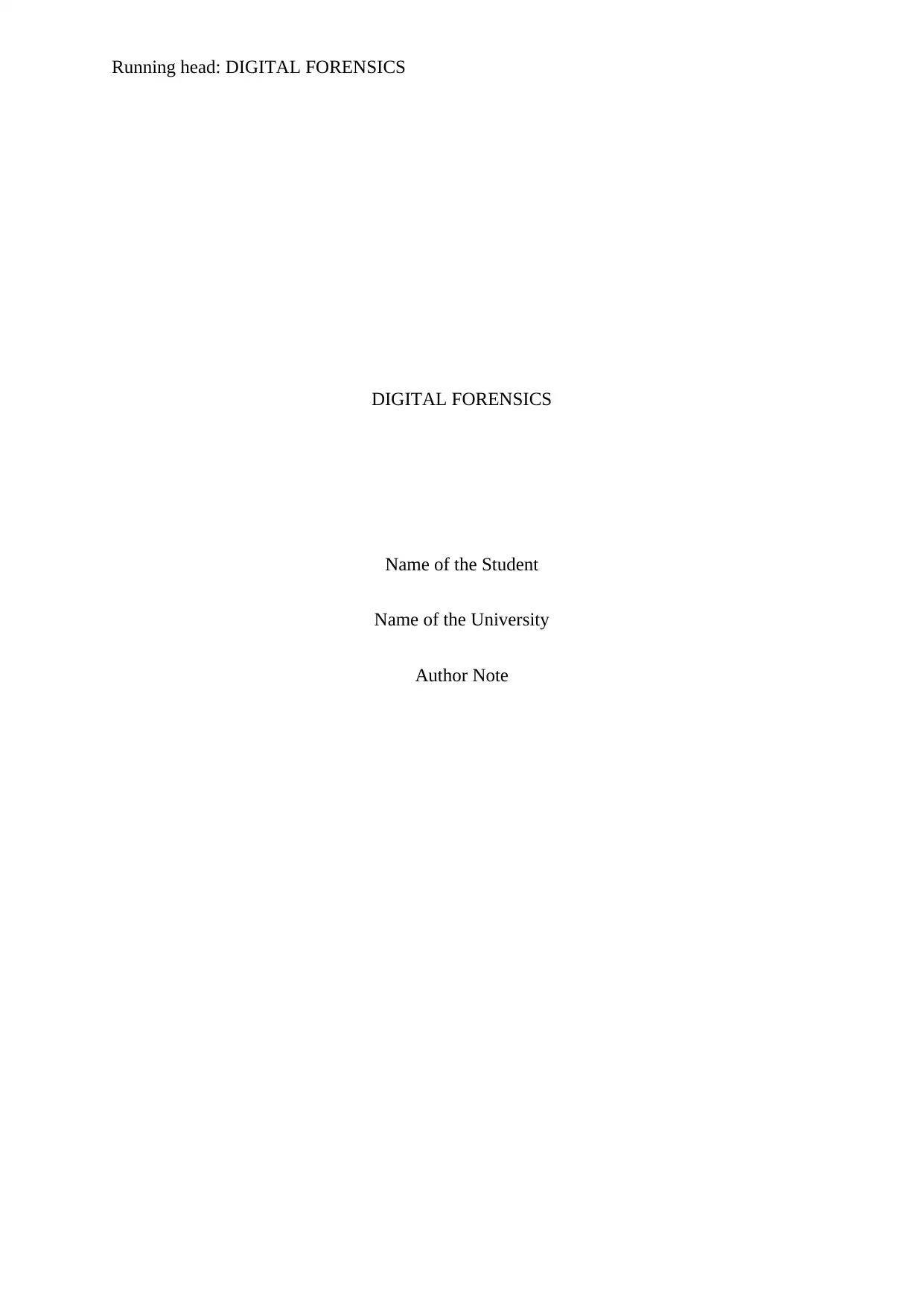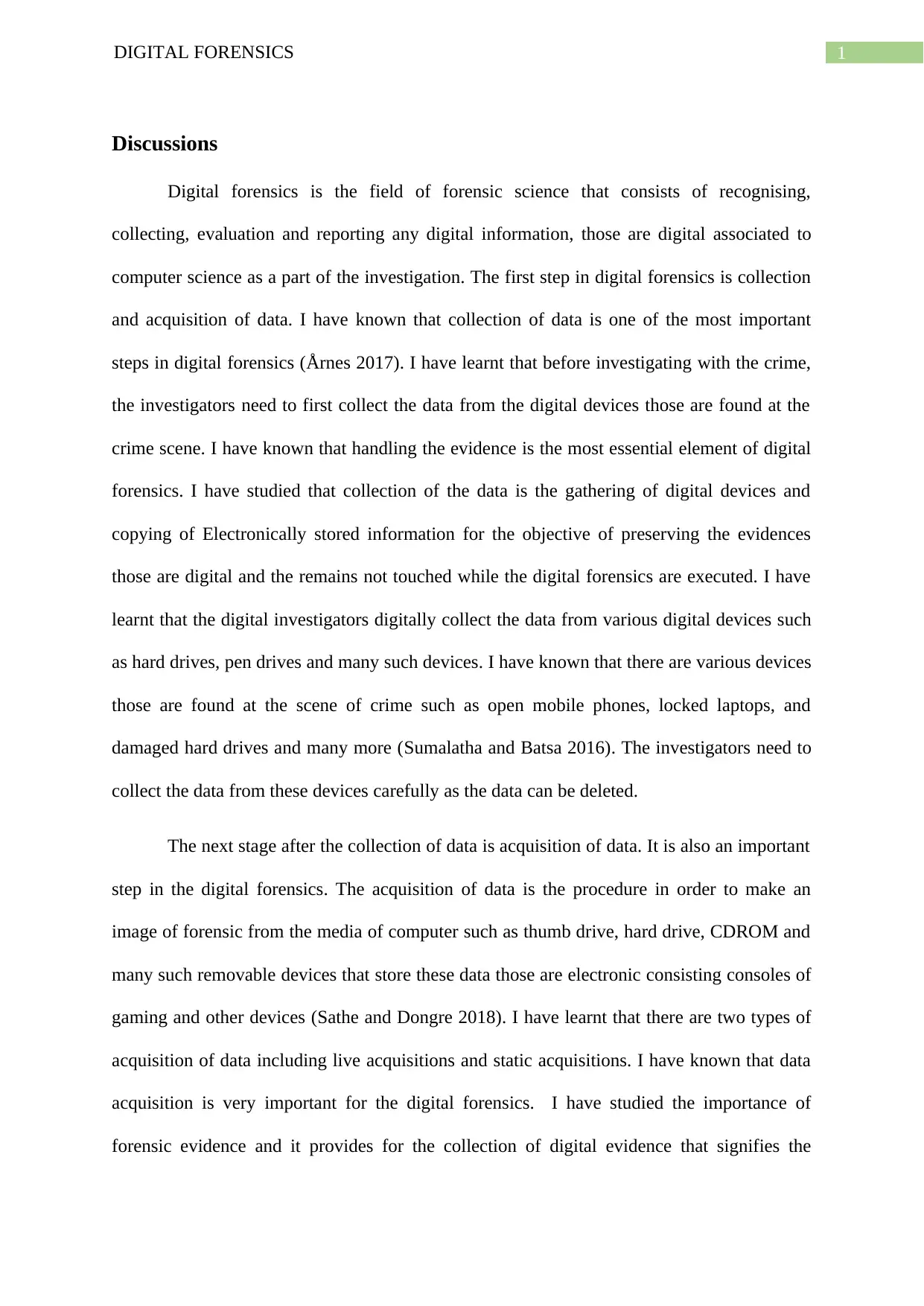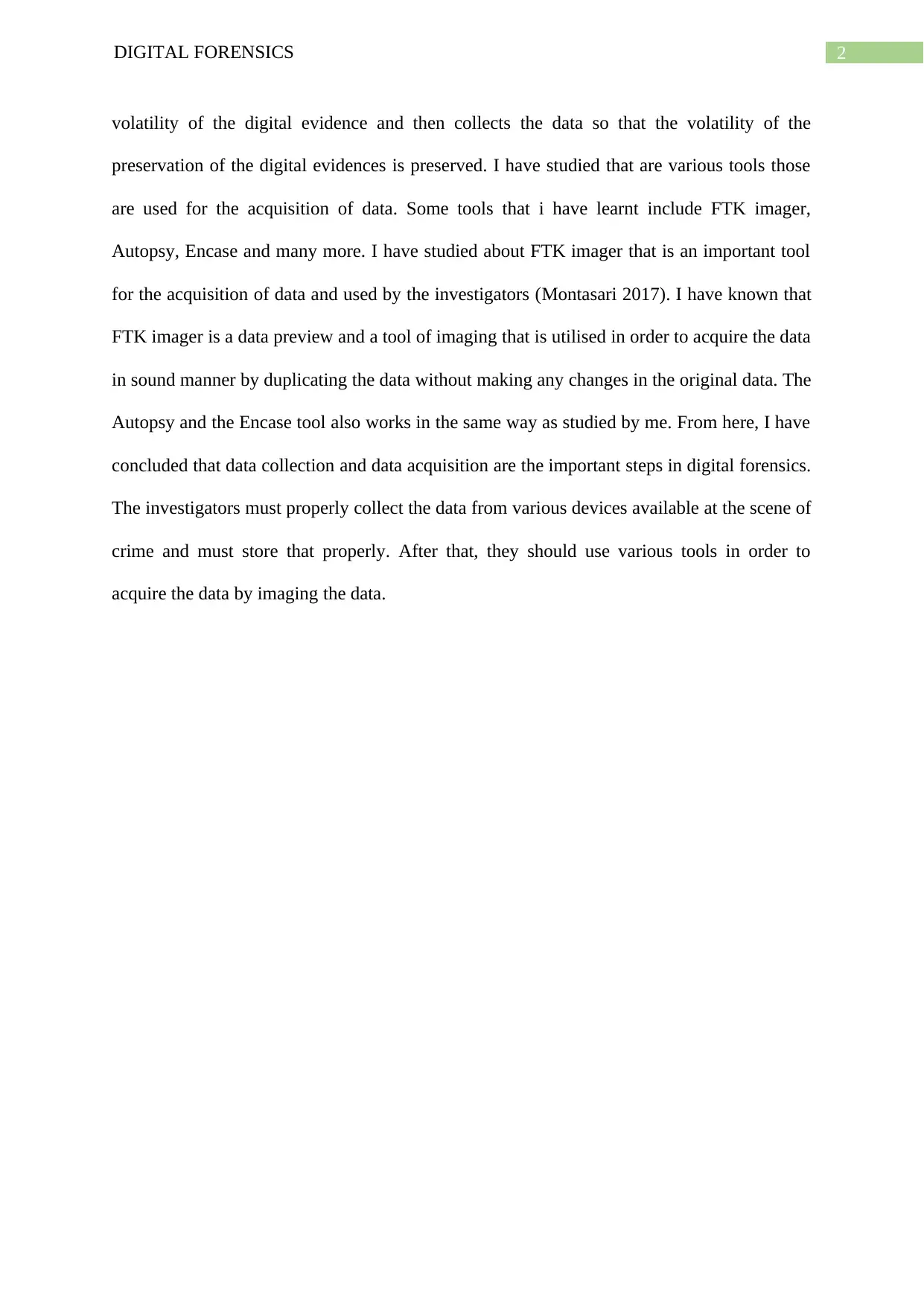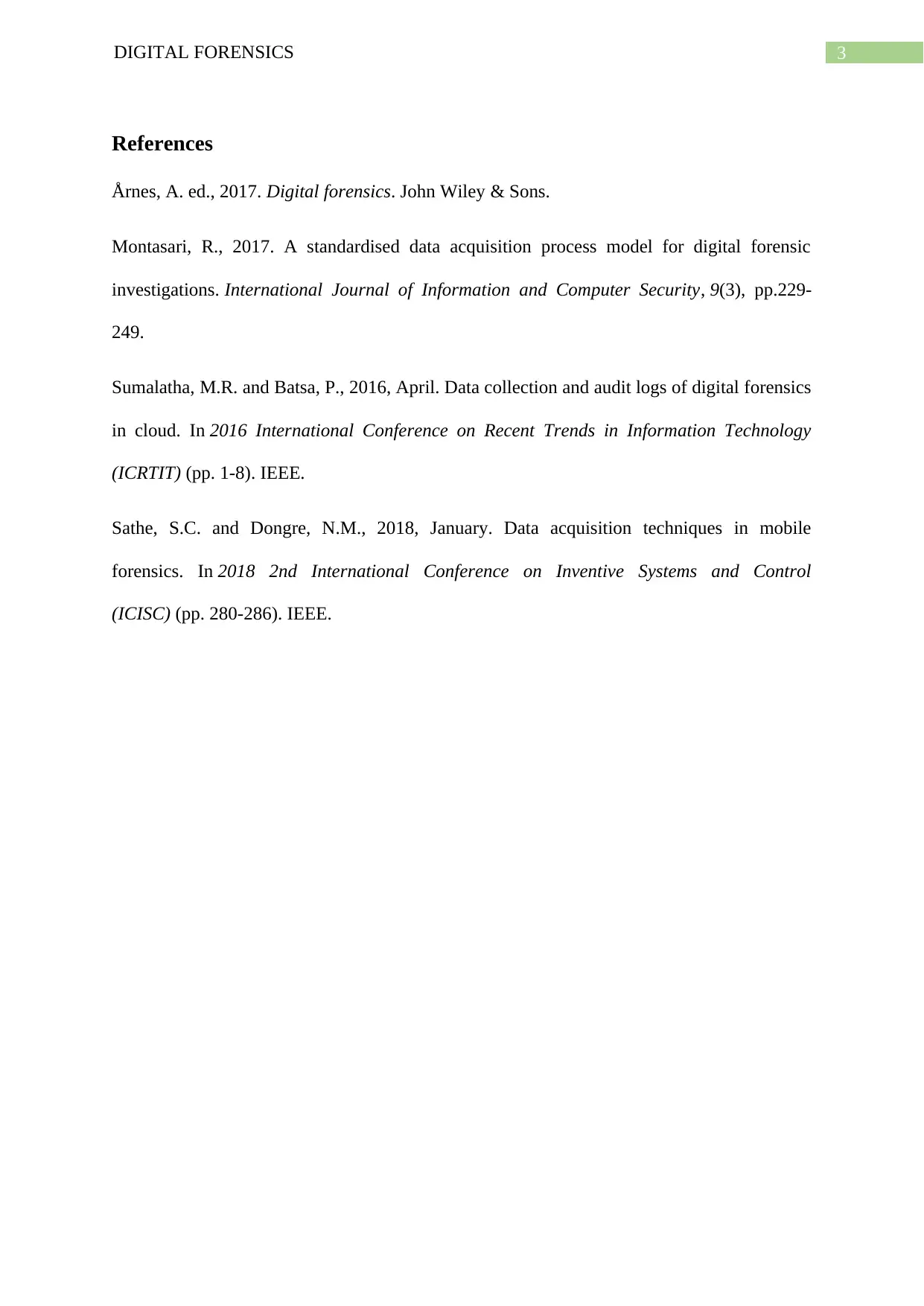University Digital Forensics Module: Reflection Report
VerifiedAdded on 2022/09/09
|4
|731
|62
Report
AI Summary
This report presents a student's reflective essay on their learning experience in a digital forensics module, specifically focusing on the topic of collection and acquisition of digital evidence. The essay explores the importance of data collection and acquisition in forensic investigations, highlighting the need for careful handling of digital devices and the use of tools like FTK Imager, Autopsy, and Encase. The student reflects on their understanding of live and static data acquisition methods, emphasizing the significance of preserving the integrity of digital evidence. The essay demonstrates the student's grasp of the key concepts and methodologies within digital forensics, as well as their ability to apply these concepts to real-world scenarios. The student also discusses the importance of data collection from devices such as open mobile phones, locked laptops, and damaged hard drives. Overall, the report reflects on the student's personal growth and development of digital forensics skills throughout the module.
1 out of 4











![[object Object]](/_next/static/media/star-bottom.7253800d.svg)